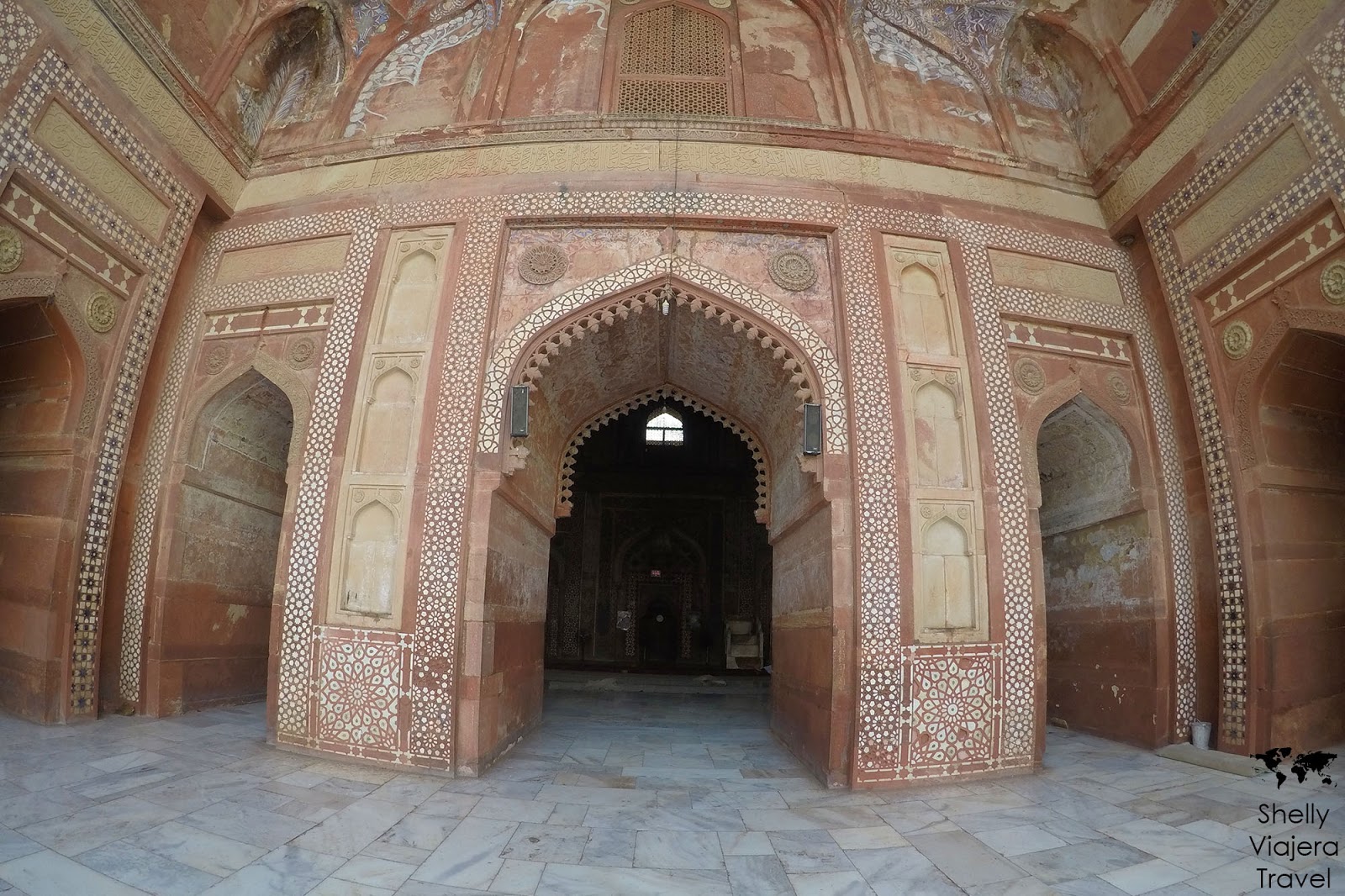Jodha Bai’s Palace
This palace was named after Jodha Bai, the third wife of King Akbar of the Mughal empire. It primarily served as harem, a domestic space reserved for the wives and concubines of the king. The architecture has huge Hindu influence that’s mostly seen in the carvings of elephants, lotus flowers, and other significant symbols in Hinduism.
The complex is divided into several areas. A few of its notable structures include:
Diwan-i-Aam - Upon entering the palace, this is probably the first area to be seen. The Diwan-i-Aam was the hall of public audience where many significant public events in Fatehpur Sikri were held. People usually stand around this area while the royalties were seated at the pillared sections.
Panch Mahal - This 5-storey building served as view deck of queens who were not allowed to be seen in public. Back in the day, it used the have jail-like screens to cover these women. The 176 pillars served as divisions to equally provide space among the many wives and concubines of the king. Panch Mahal was also called as as “Badgir,” which means wind-catching tower.
Diwan-i-Khas - This is also called the Hall of Private Audiences that served as receiving area limited to several people only. It has more detailed design reserved to impress the king's important guests.
Inside is a huge central pillar with 36 beautifully carved brackets.
Jama Masjid Mosque in Fatehpur Sikri
Built in 1571 by King Akbar, it was one of the earliest structures built in Fatehpur Sikri.
It’s a work of art for the intricate floral arabesque and other geometrical carvings on the walls. It primarily serves as a place of worship and teaching for the Muslims.
Buland Darwaza
This beautiful structure is actually the gate that leads to the courtyard of the mosque. It’s a standout for its 42 steps at 50 meters high.
It’s also called the “Gate of Magnificence” that was built after Fatehpur Sikri won in a civil war with Gujarat, a state in western India.
The dome-shaped structure on top is called chhatris (which means canopy or umbrella) that is an important element in Indian architecture.
Tomb of Salim Christi
This mausoleum is a tribute by King Akbar to Salim Christi who foretold the birth of his son. He lived a noble life who soon was declared a saint of Sufism, a mystical form of belief in Islam.
People visiting this place usually make a wish who tie a thread on the marble screens of the main tomb, serving as reminder to Salim Christi of their wishes.
Entrance fee: 500 INR (8 USD)
* This includes access to both Jodha Bai’s Palace and Jama Masjid Mosque.
Hours: 8:00AM to 6:00PM
When in India: Fatehpur Sikri
 Reviewed by Shelly Viajera Travel
on
14.10.17
Rating:
Reviewed by Shelly Viajera Travel
on
14.10.17
Rating:
 Reviewed by Shelly Viajera Travel
on
14.10.17
Rating:
Reviewed by Shelly Viajera Travel
on
14.10.17
Rating:






















